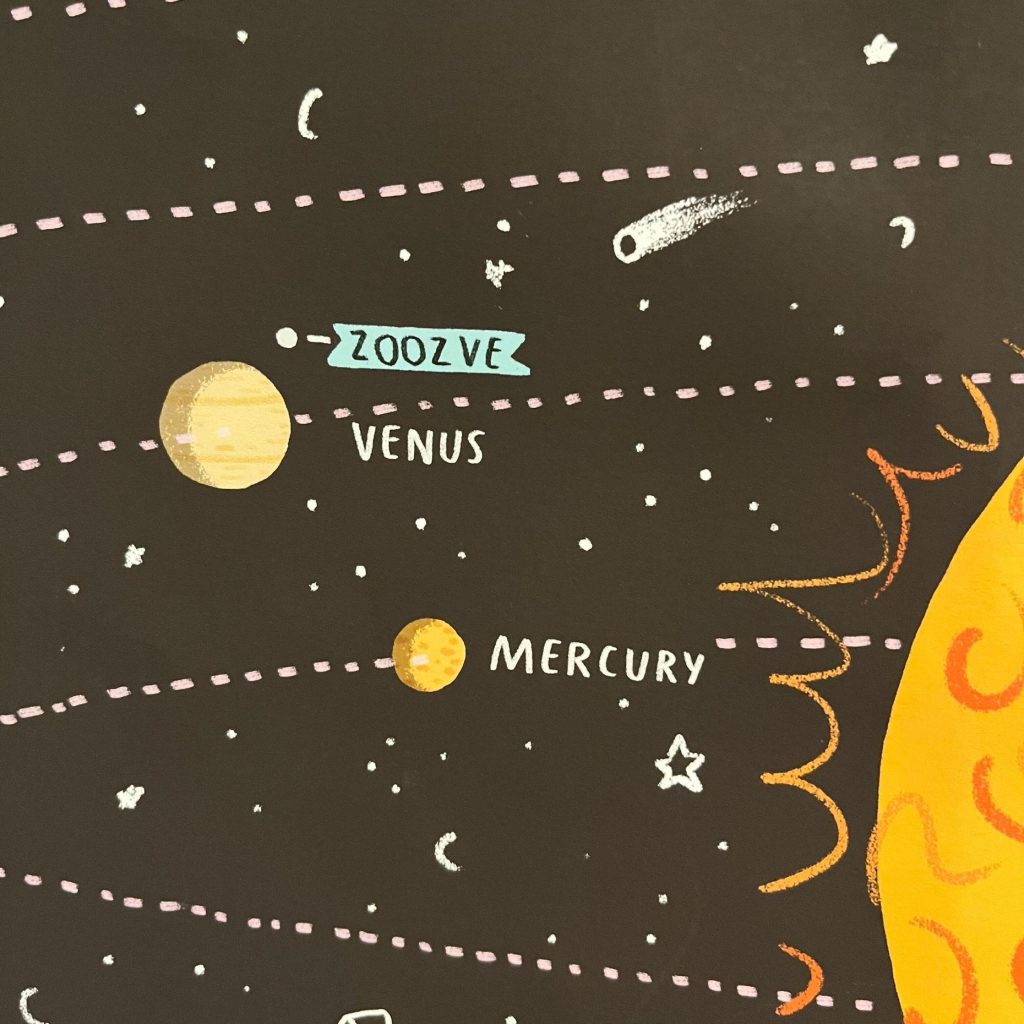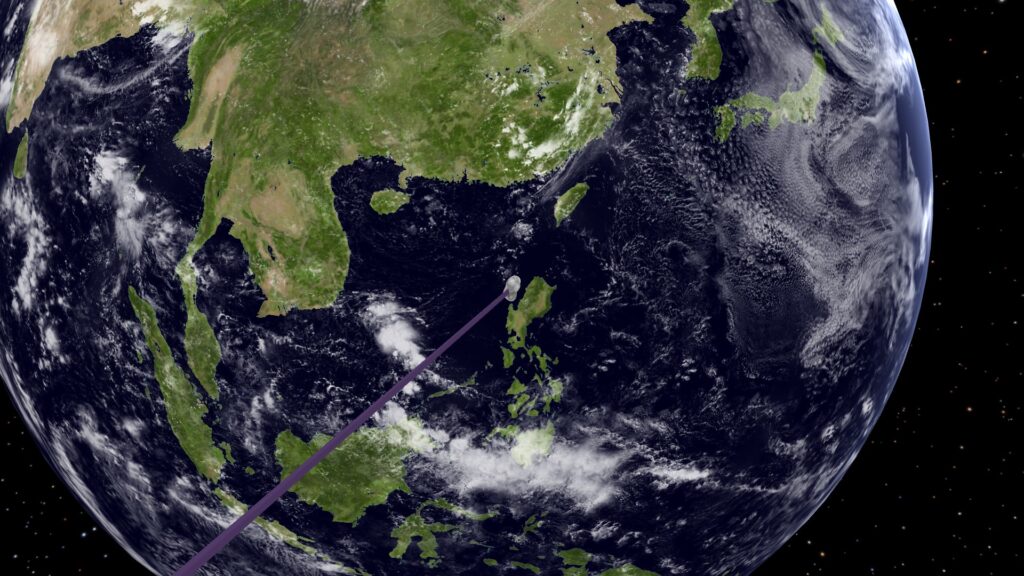This publication is a continuation of the video about the asteroid Zoozve, a quasi-satellite of Venus. In the animation dated July 18, 2023, its trajectory relative to Venus was shown in detail at the present time and in the coming decades. This video will show the evolution of its orbit over 500 years.
The elongated orbit of Zoozve crosses the orbits of three planets at once: Mercury, Venus and Earth. At the same time, the asteroid is located near Venus all the time. This is due to the fact that the period of Zoozve rotation around the Sun almost coincides with the period of Venus. For the same reason, the trajectory of this asteroid relative to Venus looks very interesting. Due to the fact that the periods coincide, the trajectory looks closed.
Relative to the Sun, Zoozve moves in an elliptical orbit inclined to the plane of Venus orbit. Therefore, when Zoozve is closer to the Sun than Venus, the asteroid moves faster and overtakes the planet. When it gets further from the Sun than Venus, the asteroid moves slower and starts to lag behind the planet. Because of this the horizontal fluctuations of the asteroid relative to Venus occur. Also, the orbit of Zoozve has a significant inclination to the Venus orbit. Therefore, it turns out to be below of it then rises above it. Because of this the vertical fluctuations of the asteroid relative to Venus occur. The combination of horizontal and vertical fluctuations gives such a complex trajectory of asteroid relative to the planet.
It is interesting that the asteroid received its official name Zoozve quite recently because of a curious story. An illustrator in one of the children’s atlases of the Solar System decided to show that Venus has a quasi-satellite. But he misread its original designation: 2002 VE68. The illustrator confused the twos with the letter Z, the zeros with the letter O, and the numbers (6 and 8) were generally considered superfluous: it turned out ZOOZVE.

During the 500-year time interval under consideration, the distance between Zoozve and Venus remains in the range from 40 to 120 million km. At the same time, the asteroid also has regular approaches to the Earth. Moreover, sometimes it passes only 5 million km from our planet, that is, 13 times farther than the Moon. This site also has animations about Kamoʻoalewa and Cruithne asteroids, which are quasi-satellites of the Earth. They have a less stable trajectory relative to the Earth and sometimes leave the vicinity of our planet. Unlike them, Zoozve does not leave the vicinity of Venus throughout the entire period of time under consideration. It seems that the approaches to Earth, on the contrary, contribute to increasing the stability of the orbit of this asteroid.
The trajectory of the quasi-satellite of Venus relative to the Earth looks even more complicated and intricate. Interestingly, this asteroid is moving in orbital resonance not only with Venus, but also with the Earth. As you have already understood, Zoozve makes one revolution around the Sun in the same time as Venus. And while the Earth makes 8 revolutions around the Sun, the asteroid manages to make 13 revolutions around it. Exactly the same ratio of periods is observed between Earth and Venus. Therefore, the trajectory of the Earth relative to the Earth for 8 years is very similar to the similar trajectory of Venus over the same period of time. But the trajectory of Venus has 5 loops of approach to the Earth, and Zoozve has 4 loops of approach and one close passage near the Earth. In addition, due to the inclination of the asteroid orbit relative to the Earth orbit, the trajectory is not flat.
The video clearly shows how the trajectory of Zoozve in the geocentric coordinate system slowly rotates in space around the Earth. A similar trajectory of Venus rotates slowly and makes a complete revolution around the Earth in 1215 years. The trajectory of Zoozve first makes an incomplete turn in one direction, then begins to rotate in the other direction.
Modeling and rendering were performed by author of this publication using own software. The calculations took into account the mutual influence of the Sun, all the planets of the Solar System, the Moon and the asteroid on each other. Relativistic effects were also taken into account in the calculation.
The track Icar_Fell.mp3 by Koi-discovery sounds in this video. This track was not changed. CC0 1.0 Universal (CC0 1.0 DEED) license.





